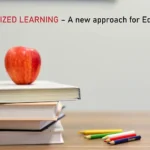In an era dominated by digital content and short attention spans, the way we learn is undergoing a radical transformation. Traditional, hours-long lectures and heavy textbooks are being replaced by microlearning—a fast, flexible, and focused approach to education. Often referred to as “bite-sized learning,” microlearning is quickly gaining popularity in schools, universities, and workplaces alike. But what makes this approach so effective, and what does it mean for the future of education?
What Is Microlearning?
Microlearning involves delivering educational content in small, highly focused segments—usually lasting between 2 and 15 minutes. These segments can take the form of:
- Short instructional videos
- Interactive quizzes
- Infographics
- Flashcards
- Brief articles or blog posts
- Podcasts or audio snippets
Rather than overwhelming learners with large amounts of information all at once, microlearning offers just enough content to address a specific learning objective or skill.
Why Is It Effective?
There are several reasons why microlearning works, especially in today’s fast-paced world:
1. Improves Retention
Studies in cognitive science suggest that we retain more information when it’s presented in short, manageable doses. Microlearning takes advantage of this by minimizing cognitive overload and allowing learners to process and store information more effectively.
2. Supports Just-in-Time Learning
Whether it’s a professional brushing up on a new tool or a student reviewing a concept before a test, microlearning allows learners to access the information they need—when they need it.
3. Fits Busy Schedules
Microlearning is ideal for learners on the go. Whether someone has five minutes between meetings or a short bus ride, they can complete a lesson without committing to a long session.
4. Increases Engagement
Microlearning often uses interactive and multimedia elements, such as videos, animations, or gamification, to keep learners engaged and motivated.
Microlearning in Education and Corporate Training
In Schools and Universities
Microlearning is being used to supplement traditional teaching. Teachers can assign short videos to reinforce class lessons, or provide mini-quizzes that help students practice key skills. It’s particularly helpful in flipped classrooms, where students review content at home and apply it in class.
In the Workplace
Organizations are increasingly using microlearning for onboarding, compliance training, and skill development. Instead of long workshops, employees can engage with quick lessons that are easy to update and scale across teams.
Challenges and Limitations
While microlearning has many benefits, it’s not without its drawbacks:
- Not ideal for deep learning: Complex topics that require critical thinking, collaboration, or extended exploration may not be well suited for short segments.
- Fragmentation risk: Learning in bits can sometimes feel disjointed if not well integrated into a broader curriculum.
- Requires good design: Poorly designed micro-content can be ineffective. Microlearning must still be purposeful, well-structured, and aligned with clear objectives.
The Future of Microlearning
As education becomes more digital and learner-centered, microlearning is likely to become a key strategy in both formal and informal education. Paired with mobile devices, AI-driven learning platforms, and personalized education paths, it can help learners take more control over when, where, and how they learn.
That said, microlearning is best used as a complement, not a replacement, for more comprehensive educational experiences. It thrives when integrated into a broader, thoughtful learning strategy that balances depth with convenience.
Conclusion
Microlearning isn’t just a trend—it’s a practical response to the realities of modern life. By delivering knowledge in focused, digestible units, it helps learners build skills, reinforce understanding, and stay engaged without feeling overwhelmed. As long as it’s used intentionally and strategically, microlearning could redefine how we approach education in the 21st century.




